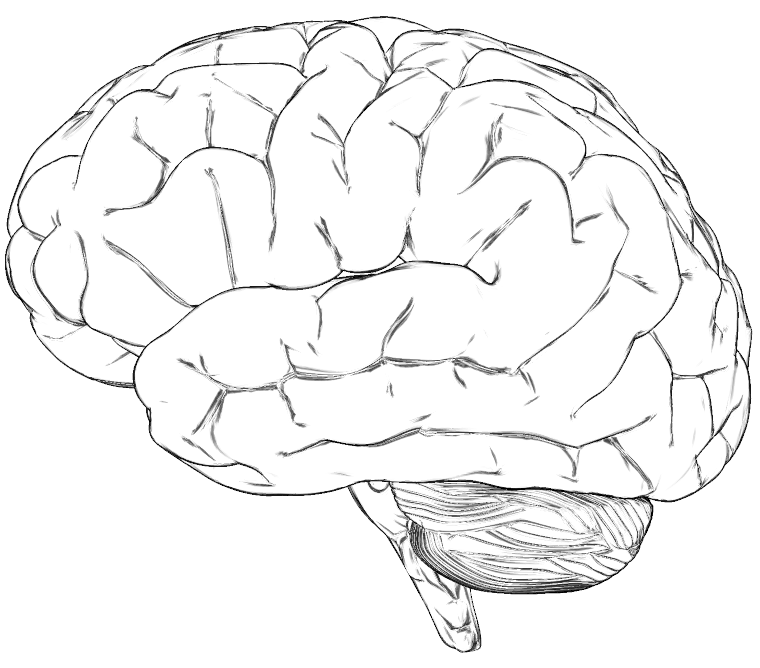
by Jennifer Wolkin | Mar 12, 2018 | Blog, Brain Health, Five to Thrive, Mindfulness, Stress, Wellness
Live your best life: Mindfully control your brain’s reaction to stress
Did you know that the brain’s “stress center,” the amygdala, shrinks post mindfulness practice? In addition, the functional connections between the amygdala and the prefrontal cortex are weakened. This allows for less reactivity to life’s basic stresses, and paves the way for higher order brain functions to be strengthened (i.e. attention, concentration, etc.)

The impact that mindfulness exerts on our brain is borne from routine: a slow, steady, and consistent reckoning of our realities, and the ability to take a step back, become more aware, more accepting, less judgmental, and less reactive. Just as playing the piano over and over again over time strengthens and supports brain networks involved with playing music – mindfulness over time can make the brain, and thus, us, more efficient regulators, with a penchant for pausing to respond to external stimuli instead of mindlessly reacting.
The amazing thing about mindfulness is that you can apply it to any action you engage in on a daily basis; cooking, cleaning, walking to work, talking to a friend, driving – or even drawing or coloring!
Why coloring? Well, for one, we all need to embrace our inner child! As adults, we don’t do enough coloring, or any type of play for that matter. Did you know that play can help reduce stress? Also, believe it or not, coloring utilizes areas of the brain that enhance focus and concentration, and nurturing attention is one of the mechanisms by which mindfulness leads to well-being.
That is helpful, because when we are engaged “on purpose” in a particular task, by focusing on it instead of remaining on autopilot, then our negative and unhelpful thinking seems far away (i.e. isn’t on our minds!) Our minds literally can’t focus on both at the same time.
Yet, it should not be seen as just a distraction from really dealing with our “problems”. By engaging in this exercise, we can continue to deepen our ability to be mindful and train our mind to stay in the present moment rather than habitually straying into unhelpful thoughts about the past or future, to rather stay non-judgmentally present to our every sensation as it unfolds. In this way, we are better equipped to calmly approach our anxiety and parse out if it is a real or imagined stress.
How to practice mindful coloring:
- Start with colored pencils, or crayons or any other drawing/coloring tool that feels right to you.
- Take a moment to notice the feeling of these instruments in your hand. Their weight, texture, the engineering that went into their creation…
- Then, listen to your gut, and start to color without too much thought about it. Don’t analyze your drawing, rather, just let what comes organically come. Try not to edit.
- If you want, you can print multiple pages so you can do this over and over again.
- See if you can focus also on the act of coloring itself as you are engaged in it. Here are some cues for you:
- How does your hand move across the page? You might even want to spend some time following it.
- How do the different strokes look? Notice the difference between using the sharp edge vs. the side of the pencil.
- How do the different colors (if you are using multiple colors) add to the different parts of the image?
- Notice, without judgment, as your drawing unfolds.
What does your unique brain look like?
In my ‘The Grand Conductor’ packet, we go through the biology of the brain, as well as the latest research on how to keep it in tip-top shape, but at the end of the day, it’s important to remember that we’re just brains studying brains. We’re limited in our understanding of the brain by the virtue of the very thing we’re using to study it!
In addition, just as every individual is unique, so is each brain different from the next, and, moreover, constantly changing as we age! So, let’s all open our minds (see what I did there?) and learn more about ours, and each other’s, unique brains.
Print out the brain image below and color it in however you please! Remember to try to practice staying mindful during the process. Let it reflect the latest brain science (learn more from the infographics at the bottom of this blog!) or let it reflect your own personal understanding of self. Whatever you decide – Let your mind soar! Keep in mind, it’s not about being an artist, in fact, no artistic skill is necessary. Just dive in and notice, again, without judgment, what the process is like for you. I’m going to do this as well, and share it on my social media pages, so stay tuned!

When you are finished, please, #ShareYourBrain on social media and tag @BrainCurves!
BRAIN EVOLUTION, ANATOMY & PHYSIOLOGY, AND WELLNESS INFOGRAPHICS
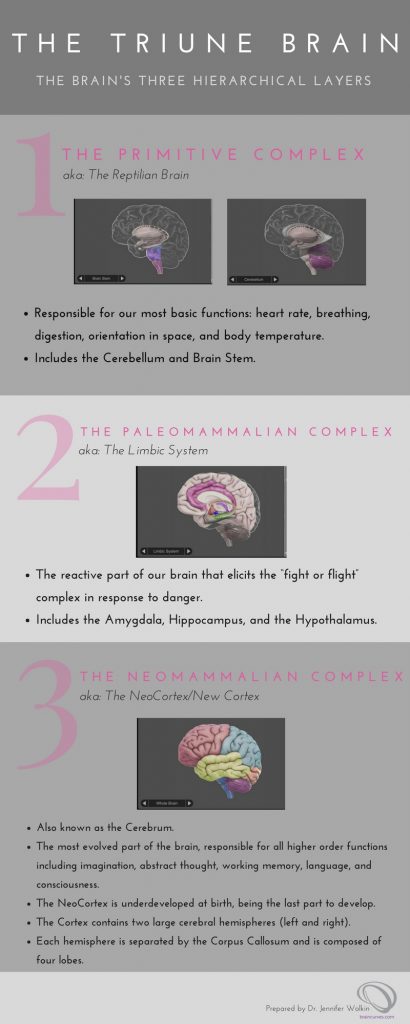
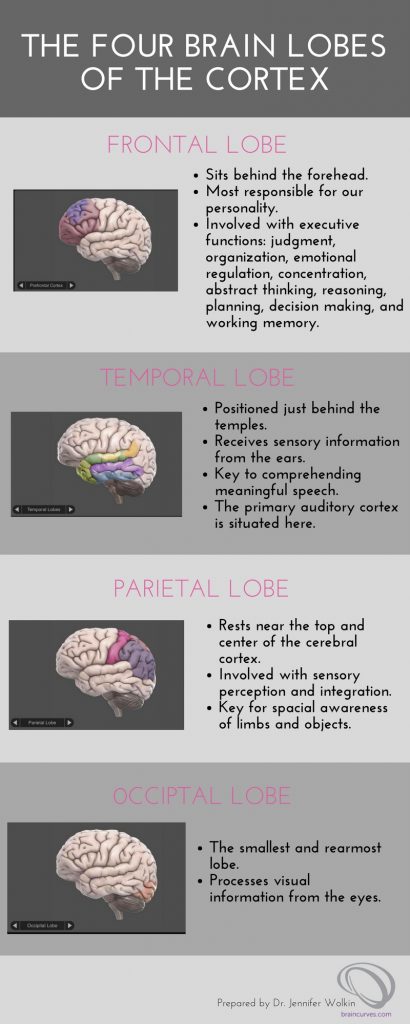
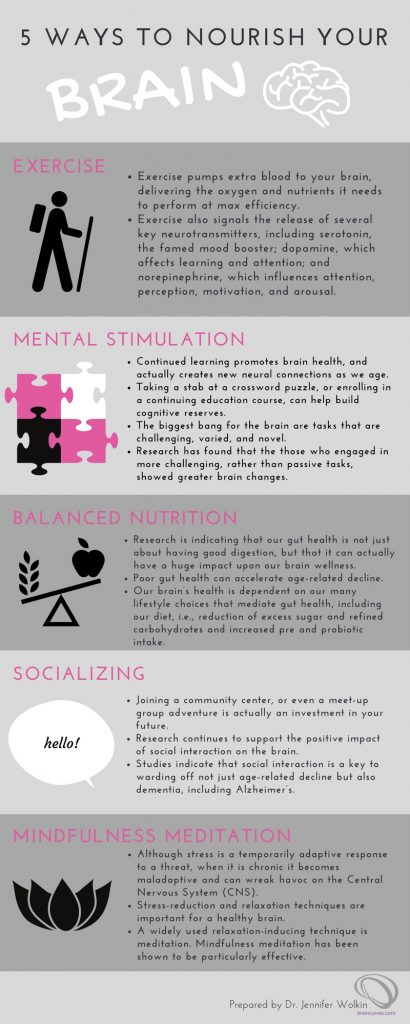

by Jennifer Wolkin | Jul 29, 2015 | Brain Health, Mindfulness, Wellness
This blog post originally appeared on Mindful.Org

Not too long ago, most of us thought that the brain we’re born with is static—that after a certain age, the neural circuitry cards we’re dealt are the only ones we can play long-term.
Fast-forward a decade or two, and we’re beginning to see the opposite: the brain is designed to adapt constantly. World-renowned neuroscientist Richie Davidson at the Center for Investigating Healthy Minds at the University of Wisconsin-Madison, along with this colleagues, want us to know three things: 1) you can train your brain to change, 2) that the change is measurable, and 3) new ways of thinking can change it for the better.
It’s hard to comprehend how this is possible. Practicing mindfulness is nothing like taking a pill, or another fix that acts quickly, entering our blood stream, crossing the Blood Brain Barrier if needed in order to produce an immediate sensation, or to dull one.
But just as we learn to play the piano through practice, the same goes for cultivating well-being and happiness. Davidson told Mindful last August that the brain keeps changing over its entire lifespan. And he thinks that’s very good news:
We can intentionally shape the direction of plasticity changes in our brain. By focusing on wholesome thoughts, for example, and directing our intentions in those ways, we can potentially influence the plasticity of our brains and shape them in ways that can be beneficial. That leads us to the inevitable conclusion that qualities like warm-heartedness and well-being should best be regarded as skills.
Davidson adds that research on neuroplasticity gives neuroscientists a framework for tracking meditation research. And CIHM is beginning to see that “even short amounts of practice,” like 30 minutes of meditation per day, “can induce measurable changes in the brain” that can be tracked on a brain scanner.
Based on recent research, I’ve chosen to share four ways your brain may change when you practice mindfulness:
• Anterior Cingulate Cortex: Increased grey matter changes were noted in the anterior cingulate cortex (ACC), which is a structure located behind the brain’s frontal lobe. It has been associated with such functions as self-regulatory processes, including the ability to monitor attention conflicts, and allow for more cognitive flexibility.
• Prefrontal Cortex: Increased grey matter density was also found in areas of the prefrontal lobe, which are primarily responsible for executive functioning such as planning, problem solving, and emotion regulation.
• Hippocampus: Increased cortical thickness in the hippocampus has also been noted. The hippocampus is the part of the limbic system that governs learning and memory, and is extraordinarily susceptible to stress and stress-related disorders like depression or PTSD.
Decreased Amygdala Size:
Studies have shown that the amygdala, known as our brain’s “fight or flight” center and the seat of our fearful and anxious emotions, decreases in brain cell volume after mindfulness practice.
Diminished or enhanced functionality in certain networks/connections:
Not only does the amygdala shrink post mindfulness practice, but the functional connections between the amygdala and the pre-frontal cortex are weakened. This allows for less reactivity, and also paves the way for connections between areas associated with higher order brain functions to be strengthened (i.e. attention, concentration, etc.).
Reduced activity in the Brain’s “Me” Center:
Mindfulness practice has been implicated in the decreased activation and the stilling of our Default Mode Network (DMN), which is also sometimes referred to as our wandering “Monkey Minds.” The DMN is active when our minds are directionless as it goes from thought to thought, a response that is sometimes likened to rumination and not always adaptive with regards to overall happiness.
The impact that mindfulness exerts on our brain is borne from routine: a slow, steady, and consistent reckoning of our realities, and the ability to take a step back, become more aware, more accepting, less judgmental, and less reactive. Just as playing the piano over and over again over time strengthens and supports brain networks involved with playing music, mindfulness over time can make the brain, and thus, us, more efficient regulators, with a penchant for pausing to respond to our worlds instead of mindlessly reacting.
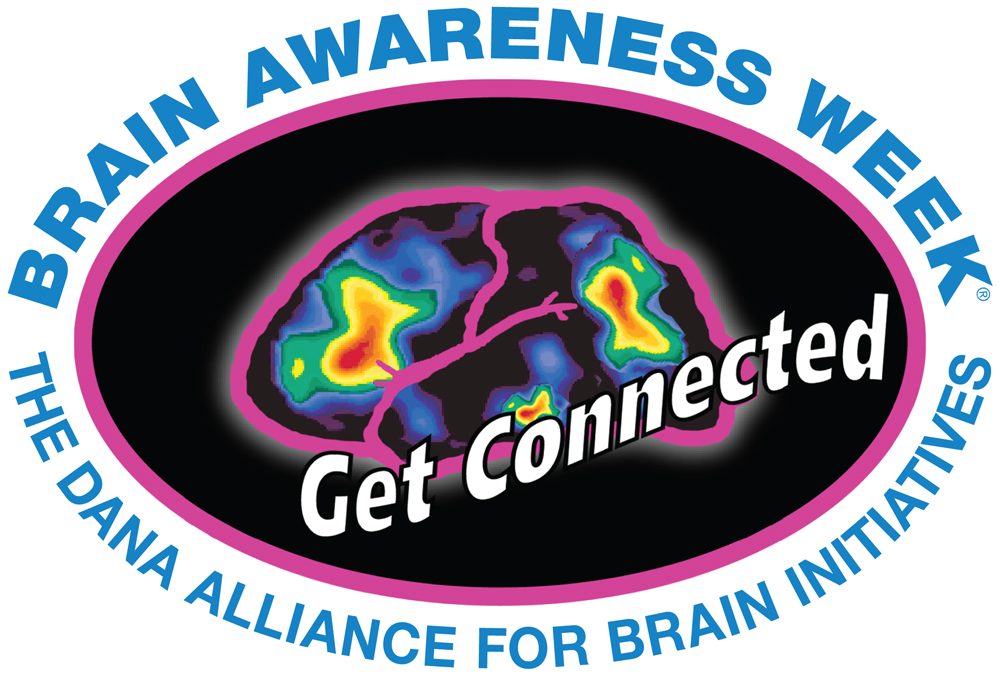
by Jennifer Wolkin | Mar 16, 2015 | Brain Health, Wellness
This post is in honor of Brain Awareness Week
Celebrated March 16-22.

Why is the Brain important?
The Brain is the grand conductor of the Symphony of Our Selves! That’s right. The Brain leads mind and body, and the Brain heeds mind and body. The Brain plays a role in every thought, feeling, and body sensation we experience. That includes every twitch, every blink, every strum of a guitar, every orgasm. That also includes every dream, passion, fear, joy, and deepest desire.
The Brain is the big boss and on top of that, it has a lot of nerve too!
Seriously speaking, the brain and the spinal cord make up the Nervous System, composed of billions of nerve cells (i.e. neurons) that speak back and forth between the brain and body. What’s the convo like? Well, the Nervous System is at least bilingual, and speaks both electrically and chemically. The latter refers to neurotransmission of substances like norepinephrine, dopamine and serotonin, which we know play a huge role in our mood functioning, among a lot of other things.
The neuro-nutshell is really just THIS: Miraculous.
Every memory you consolidated last night while you slept, each micro-movement used to brush your teeth this morning, every smoothie you tasted, step you took, daydream you pondered, daydream you snapped out of, work you intently focused upon, yawn you took, anxiety you felt, drop in blood sugar you experienced was a manifestation of lots of talking. A plethora of dialogue went on inside of you today, and you need to know it!
Why is it so important to know how much chatter the brain is doing?
To be mindful of the orchestration of our internal states (some in reaction to the external, some not) is to be mindful of the essentiality of nourishing our brains.
How do we nourish the Brain?
The latest scientific research shows: Neuroplasticity, the idea that new neurons can be created, makes it very possible for lifestyle to play a big role, no matter your age, in maintaining and improving brain function. Of course, as always, nature and nurture dance an exquisite but complex dance, and so there is never one solution or one cause and effect paradigm when it comes to your wellness.
Yet, there is something each of us can do to help our Brains stay vital:
- Reduce your stress levels (and SO much else) by practicing Mindful Meditation
- Get the blood a pumpin’ around up there via Exercise
- Use it, so you don’t Lose it, by engaging in Mental Stimulation
- Literally nourish your brain with Balanced Nutrition
- Stay positively connected to yourself and others by Socializing
Remember. When your Brain Thrives, YOU Thrive.
How will you make one change in your life today towards Brain Health? Share your thoughts in a comment below.









